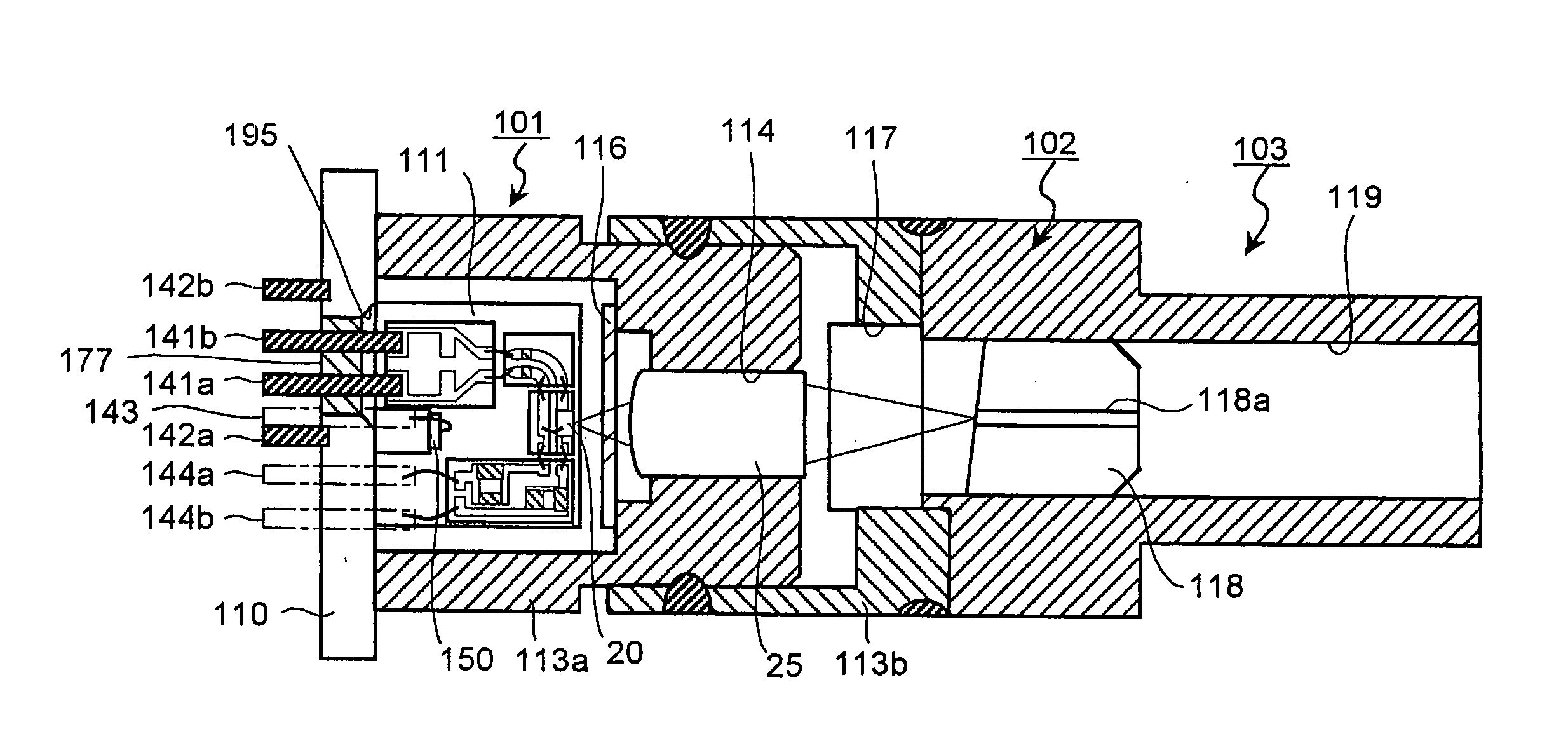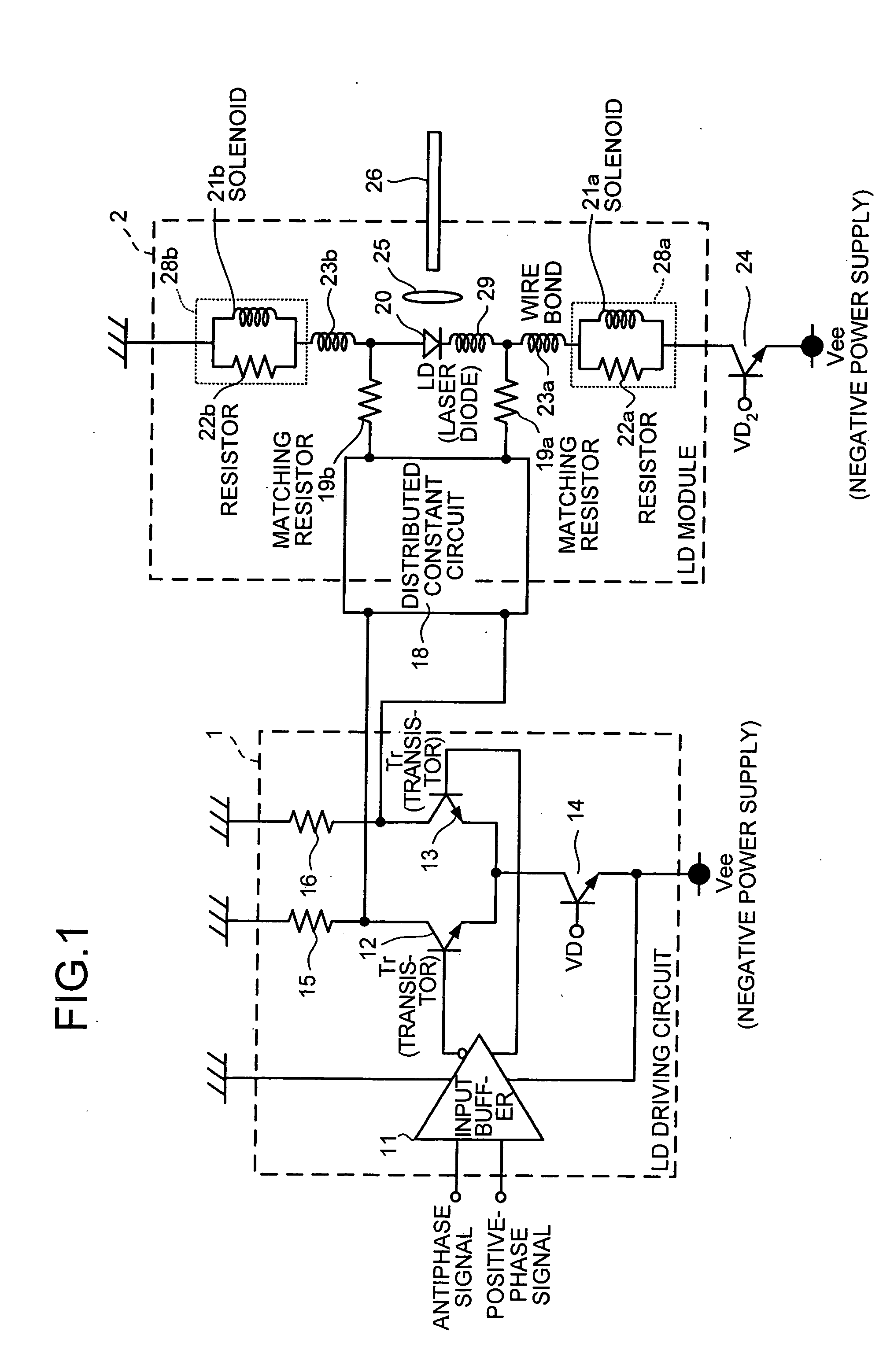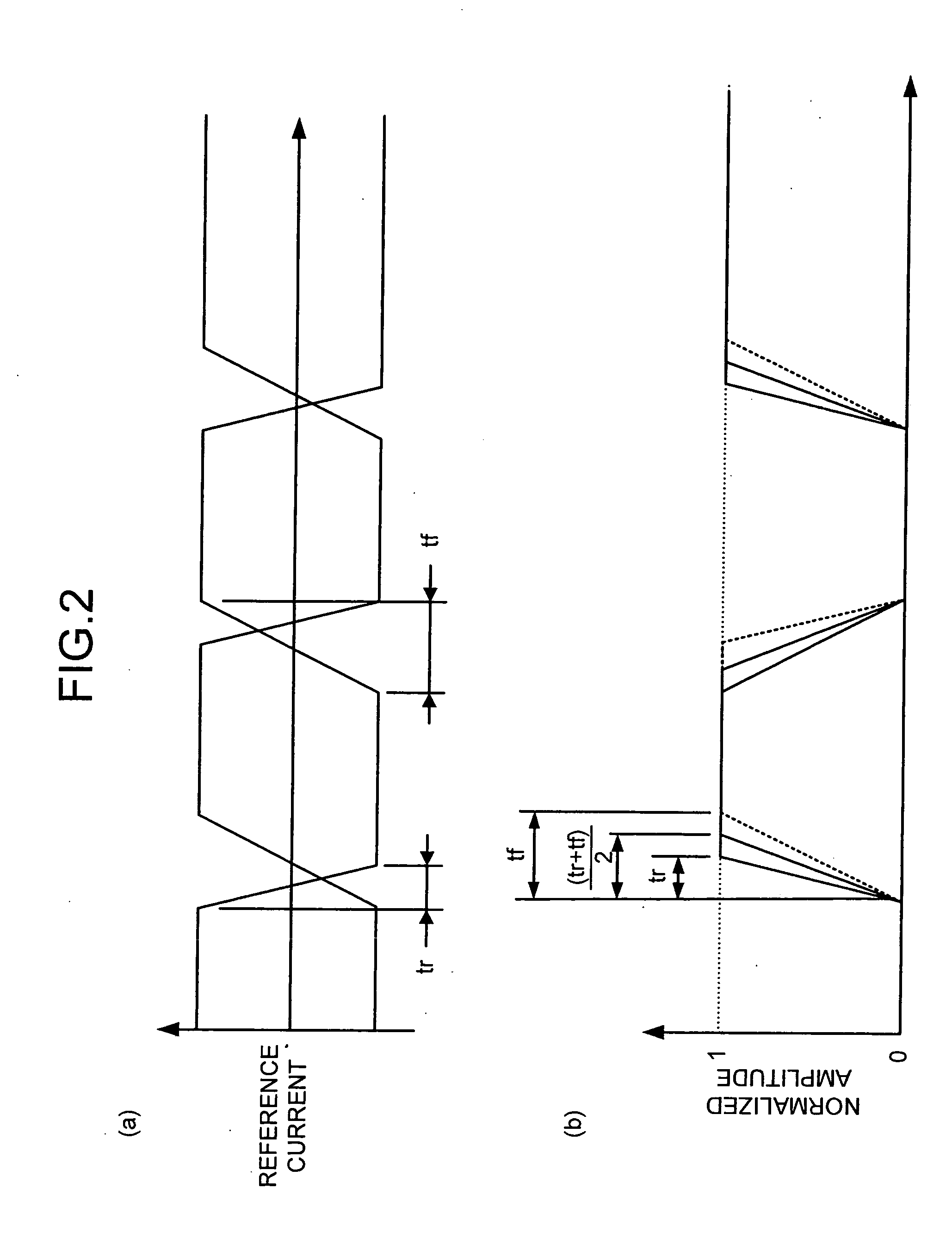Optical semiconductor device
a technology of optical semiconductors and semiconductor modules, applied in the direction of lasers, electromagnetic transceivers, semiconductor lasers, etc., can solve the problems of no margin at all to the prescription of eye masks, oscillation frequency, conspicuous deterioration of optical output waveforms of ld modules, etc., to improve the waviness of frequency response characteristics
- Summary
- Abstract
- Description
- Claims
- Application Information
AI Technical Summary
Benefits of technology
Problems solved by technology
Method used
Image
Examples
first embodiment
[0080]FIG. 1 is a circuit block diagram which illustrates one example of an optical semiconductor device according to the first embodiment. In FIG. 1, an LD driving circuit 1 includes an input buffer 11 which has a differential input configuration, a pair of differential transistors 12 and 13 which have differential configuration and which output an antiphase signal and a positive phase signal, respectively, a transistor 14 which performs a constant-current operation, and resistors 15 and 16 which are loads of collectors of the differential transistors 12 and 13, respectively, and which make impedance matching.
[0081] The input buffer 11 shapes waveforms of input antiphase signal and positive phase signal, and generates the adjusted antiphase signal and positive phase signal to be input to bases of the differential transistors 12 and 13.
[0082] The paired differential transistors 12 and 13 that have the differential configuration and the transistor 14 constitute a differential ampli...
second embodiment
[0116]FIG. 5 is a circuit block diagram which illustrates one example of the optical semiconductor device in the second embodiment. In FIG. 5, the LD driving circuit 1 includes the input buffer 11 which has differential input configuration, the paired differential transistors 12 and 13 which have differential configuration to output an antiphase signal and a positive phase signal, respectively, the transistor 14 which performs a constant-current operation, and the resistors 15 and 16 which are resistors against the loads of collectors of the differential transistors 12 and 13, respectively,,and which make impedance matching.
[0117] The input buffer 11 shapes waveforms of input antiphase signal and positive phase signal, and generates the adjusted antiphase signal and positive phase signal to be input to bases of the differential transistors 12 and 13.
[0118] The paired differential transistors 12 and 13 that have the differential configuration and the transistor 14 constitute a diff...
third embodiment
[0136] In the first embodiment, the advantages of using the differential lines have been explained while centering around the advantage of compensating the asymmetry of the rise / fall characteristics of the LD driving circuit and improving the optical output waveform. By employing the differential lines, there is an advantage in that frequency characteristics can be improved besides the advantage of compensating the asymmetry of the rise and fall characteristics. In this embodiment, the advantage of improving the frequency characteristics will be explained while referring to equivalent circuits for specific examples of reactances and resistances.
[0137]FIG. 9(a) is a simplified equivalent circuit diagram which simulates a high frequency operation of the conventional optical semiconductor device shown in FIG. 18. In FIG. 9(a), reference symbol 31 denotes the output impedance of the LD driving circuit, 309 denotes a matching resistor, and 310 denotes the internal resistance of the LD. ...
PUM
 Login to View More
Login to View More Abstract
Description
Claims
Application Information
 Login to View More
Login to View More - R&D
- Intellectual Property
- Life Sciences
- Materials
- Tech Scout
- Unparalleled Data Quality
- Higher Quality Content
- 60% Fewer Hallucinations
Browse by: Latest US Patents, China's latest patents, Technical Efficacy Thesaurus, Application Domain, Technology Topic, Popular Technical Reports.
© 2025 PatSnap. All rights reserved.Legal|Privacy policy|Modern Slavery Act Transparency Statement|Sitemap|About US| Contact US: help@patsnap.com



